‘Listen to your inner voice’: Artist tips on creativity from the Karnataka Chitrakala Parishath exhibition
In our second photo essay from the exhibition organised by TV Tharakeshwari, we feature more creative works and artist insights.
Launched in 2014, PhotoSparks is a weekly feature from YourStory, with photographs that celebrate the spirit of creativity and innovation. In the earlier 755 posts, we featured an art festival, cartoon gallery, world music festival, telecom expo, millets fair, climate change expo, wildlife conference, startup festival, Diwali rangoli, and jazz festival.
Karnataka Chitrakala Parishath recently hosted an exhibition curated by TV Tharakeshwari, a life member of the organisation. A master's graduate from the College of Fine Arts, Bengaluru, Tharakeshwari is an experienced artist, textile designer and teacher (see Part I of our exhibition coverage here).

Curator perspectives
“I have 40 group shows under my belt in Bengaluru. I have travelled across India and overseas to six other countries, and each of those memories is baked into my artwork,” she tells YourStory. These countries include the UAE, the US, Nepal, Sri Lanka, and Singapore.
“My journey has been filled with highs and lows just like life. Each life experience has been enriching my learning to move forward with more confidence,” she adds.
The creative process in artworks is a reflection of personal experiences. “I am influenced by my ancestral values,” Tharakeshwari says.

Unique furniture or precious valuables help her easily correlate the old traditions and present-day evolution. “I am indeed emotionally attached to all the things ancestral, so much so that I even have a few collectables from my grandparents' days,” she explains.
Her medium is an amalgamation of ancestral collectables and handmade crochet to complement them. “All my works reflect and relay the different phases of life that depict the evolution through my experience and perception,” Tharakeshwari describes.
For many women artists, the priority is taking care of family until the children grow up. “Only then do women artists continue pursuing their artistic journeys full-time,” she observes.
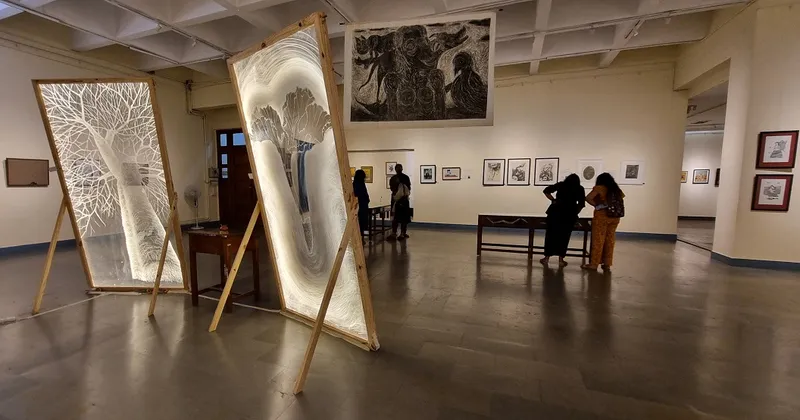
She calls for more government support for the arts through education and training programmes, as well as international exchanges and residencies. It also extends to exhibition and performance spaces, legal assistance, and copyright protection.
“Governments should commission artworks for public spaces," she adds.
Such commissioned works beautify and enrich public areas. "They also provide employment and exposure for artists,” Tharakeshwari affirms.
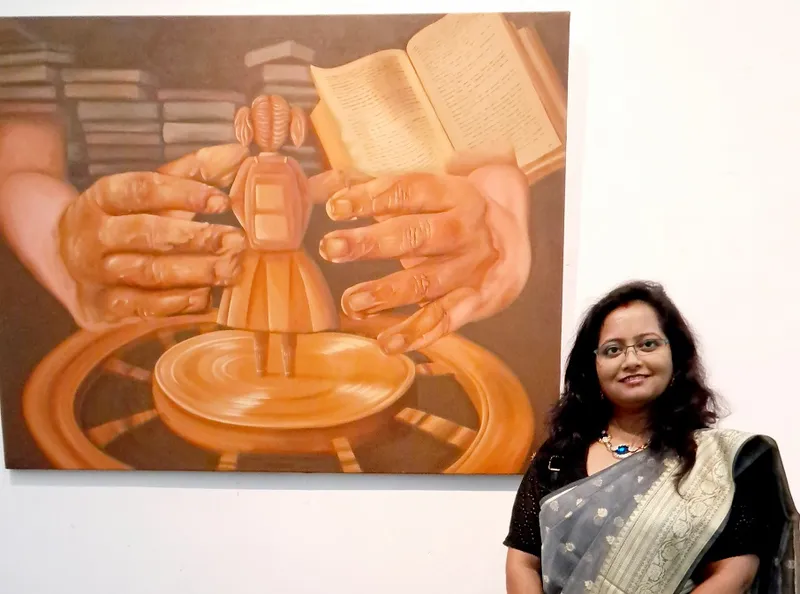
Apurba Das
Artist insights
In this photo essay series, we also share insights from some of the artists who exhibited at the show, which was held on the occasion of International Women's Day. For example, Apurba Das showcased her paintings Parent’s Hand and Day Dreams.
"In the piece Parent's Hand, I depicted the fact that parents and teachers build the next generation with all their knowledge. They are making and transferring the knowledge to the little girl, as educating a girl is educating the entire next generation,” she describes.
“Art for me is a way of presenting thoughts to the world beautifully and colourfully,” she explains. She is working next on a series of realistic expression artworks for an upcoming exhibition.
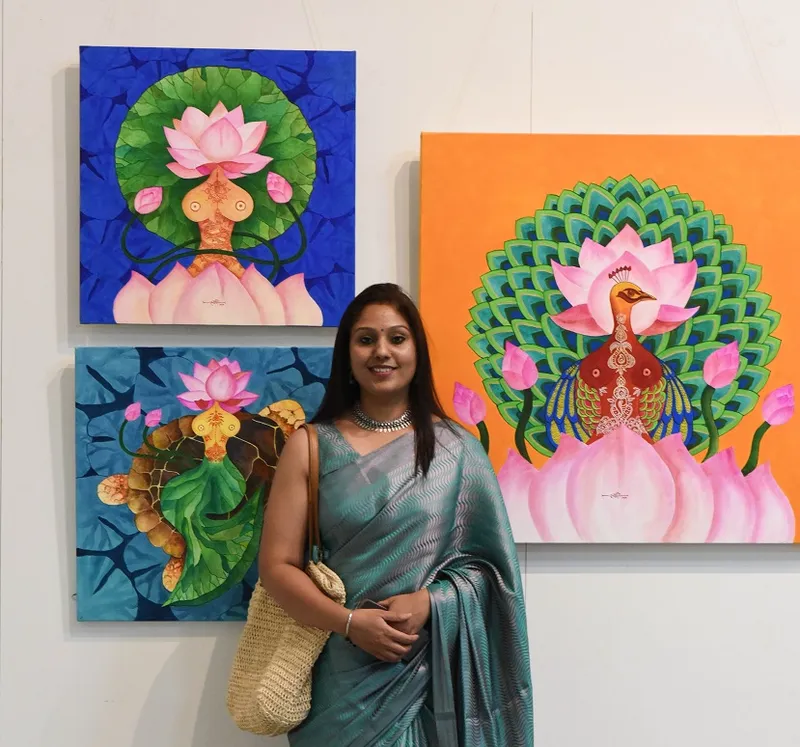
Swati Tiwari
“Art is a medium for exploring myself, my thoughts, values and beliefs. I find it is a brilliant way to meet myself and express feminine divinity,” Swati Tiwari explains.
In the exhibition, she showcased the Dhriti series. “Dhriti means beautiful, intelligent and courageous feminine energy that is present in different forms on this earth,” she says.
“Dhriti can also be interpreted as Devi. My compositions mainly comprise female forms wherein I have used various flowers to showcase aspects of femininity,” Tiwari describes.
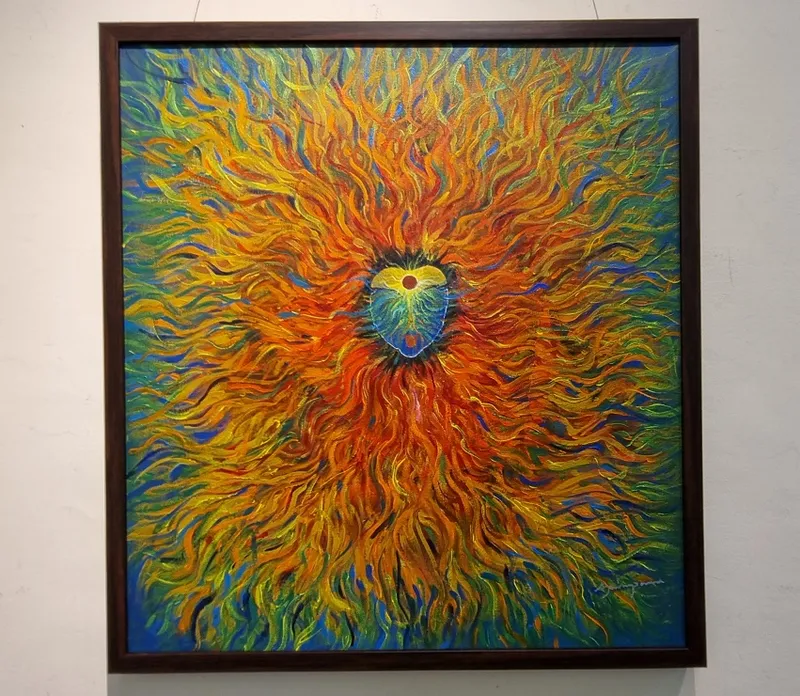
The floral arrangements are intended to convey feminine divine energies. “They are represented in a unique and creative manner,” she adds.
Tiwari is working next on new explorations of the Dhriti series. “I am trying to explore deeper spiritual aspects of Prakriti elements that are described in our spiritual texts,” she says.
“Keep doing art, be creative, and be consistent. Keep practising and keep improving,” Tiwari adds, as tips for emerging artists.
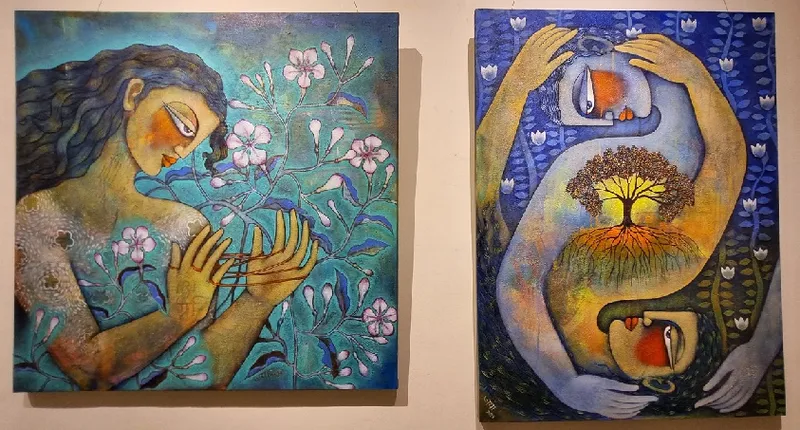
Das expresses her gratitude to curator Tharakeshwari for successfully organising the exhibition and bringing together the best artworks of 200 women artists.
“Listen to your inner voice. Keep learning and do not give up,” Das signs off, as advice for aspiring artists.
Now what have you done today to pause in your busy schedule and harness your creative side for a better world?
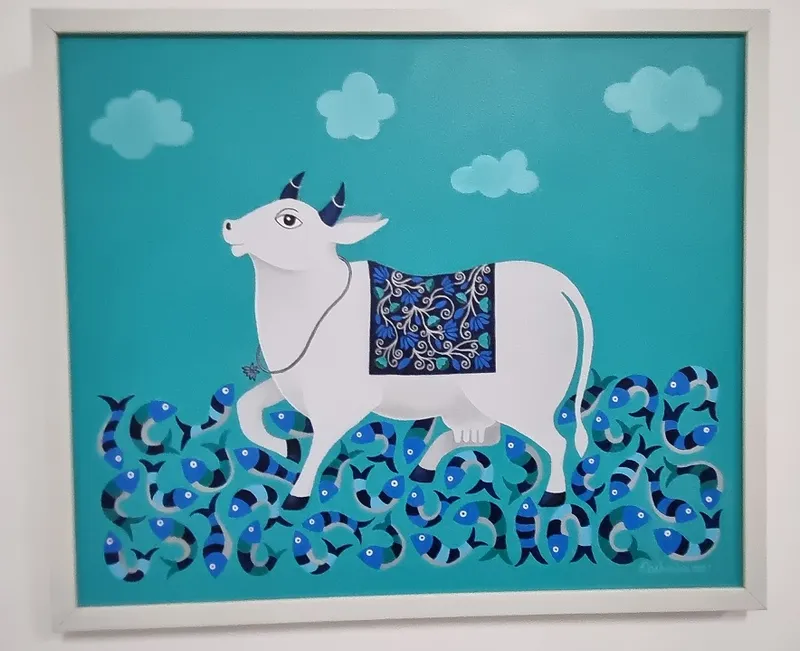
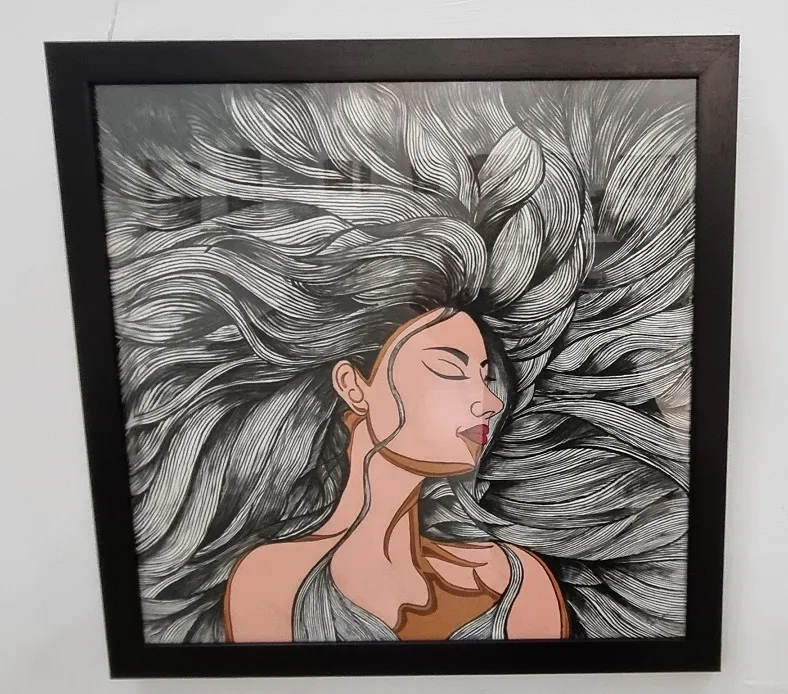
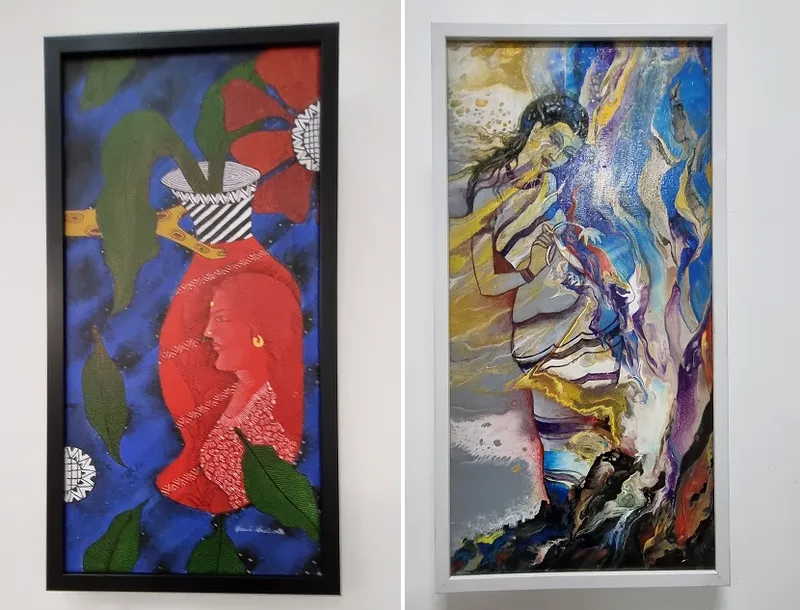
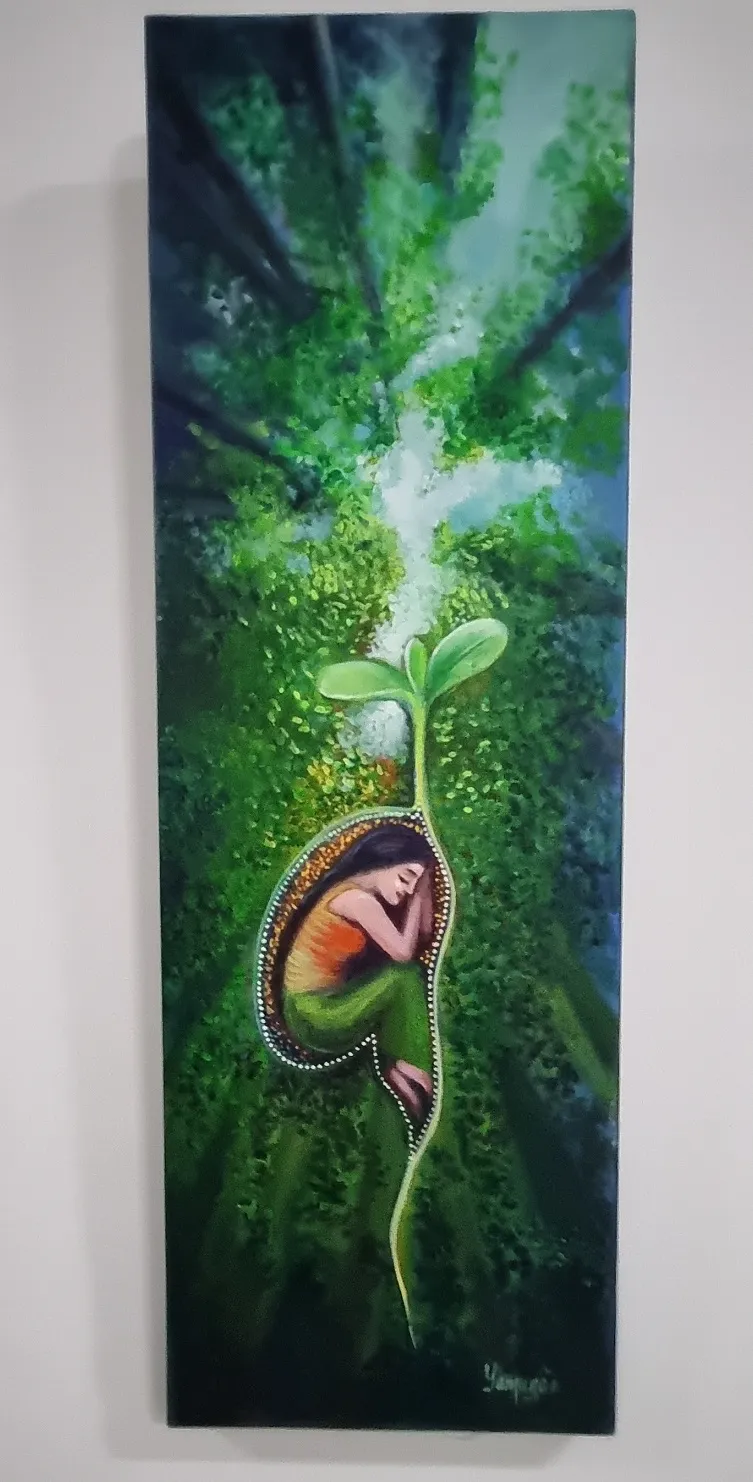
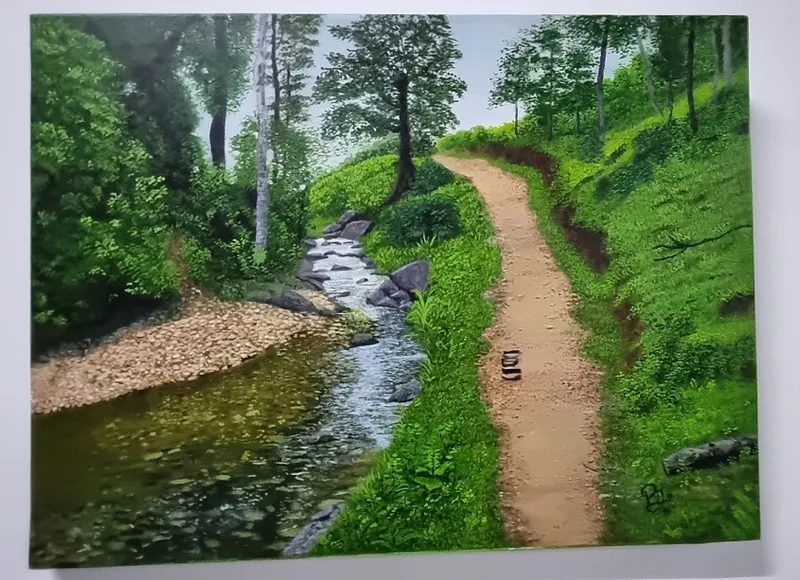

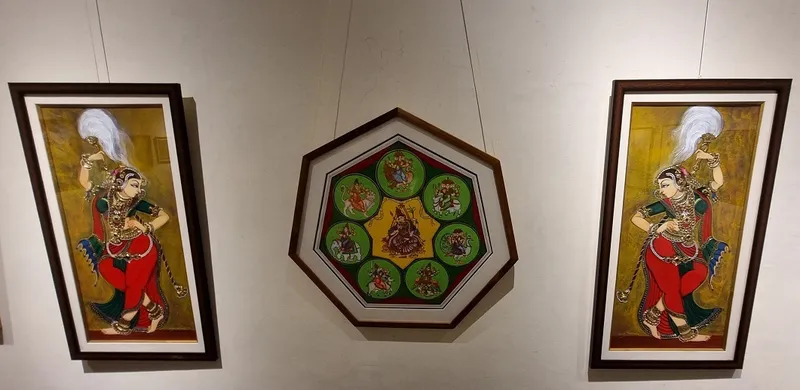
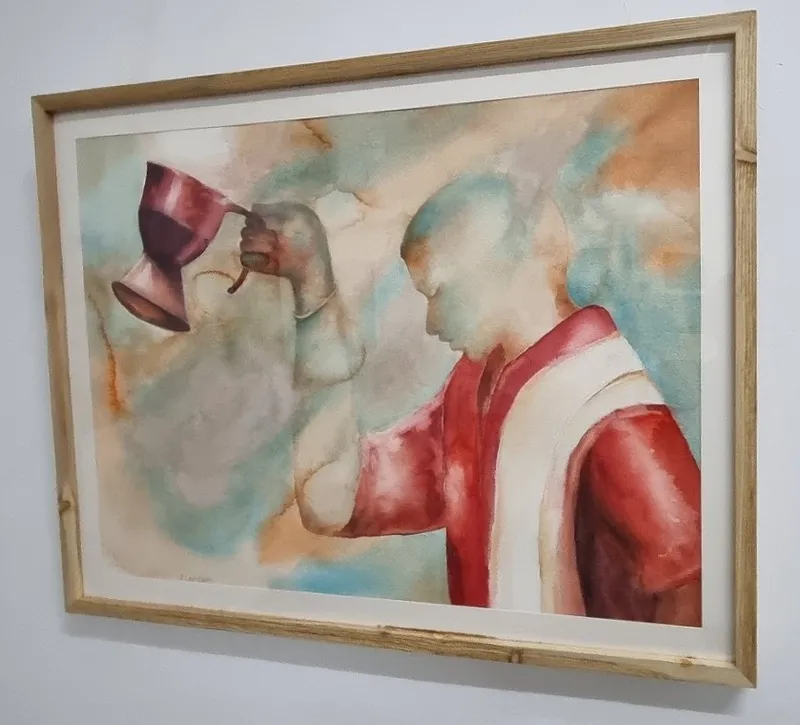
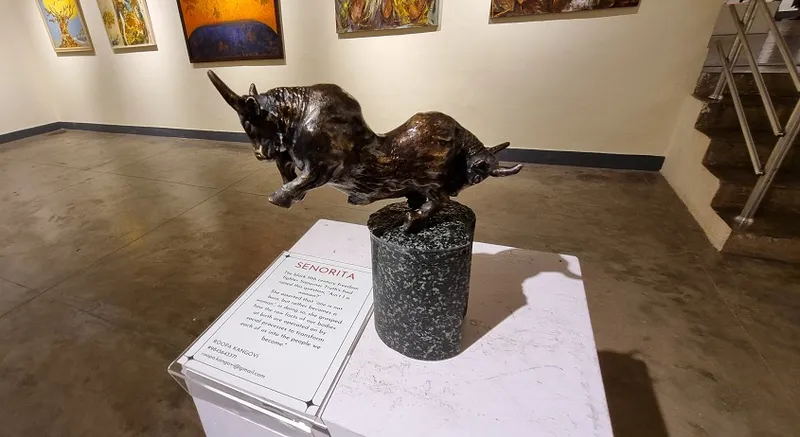
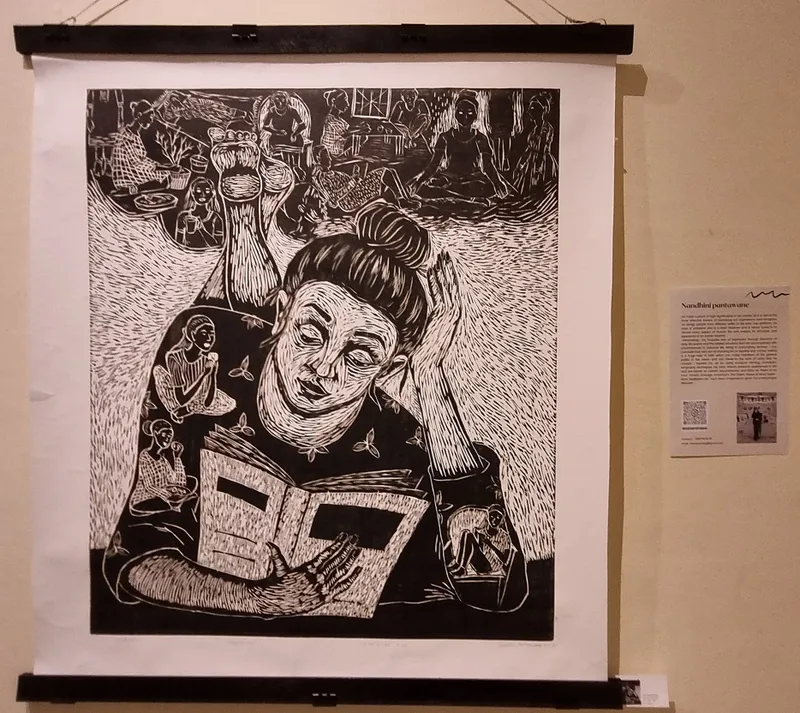
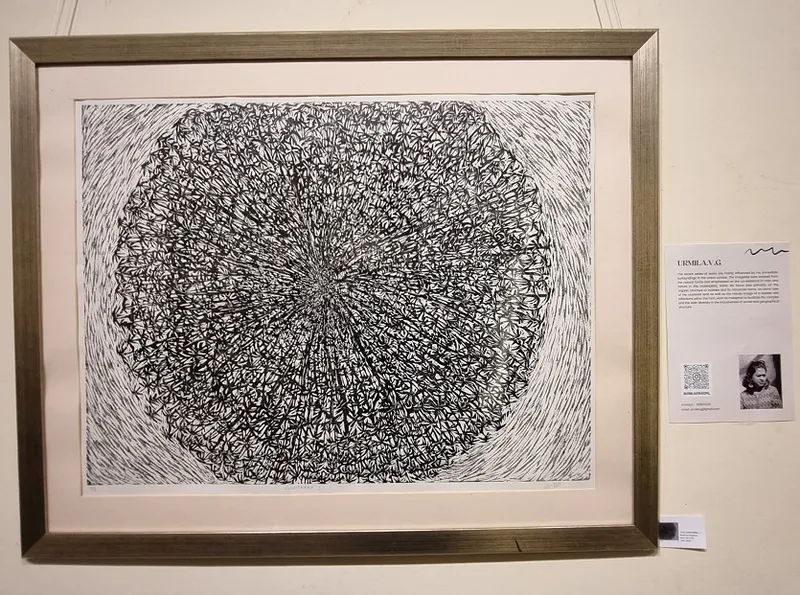
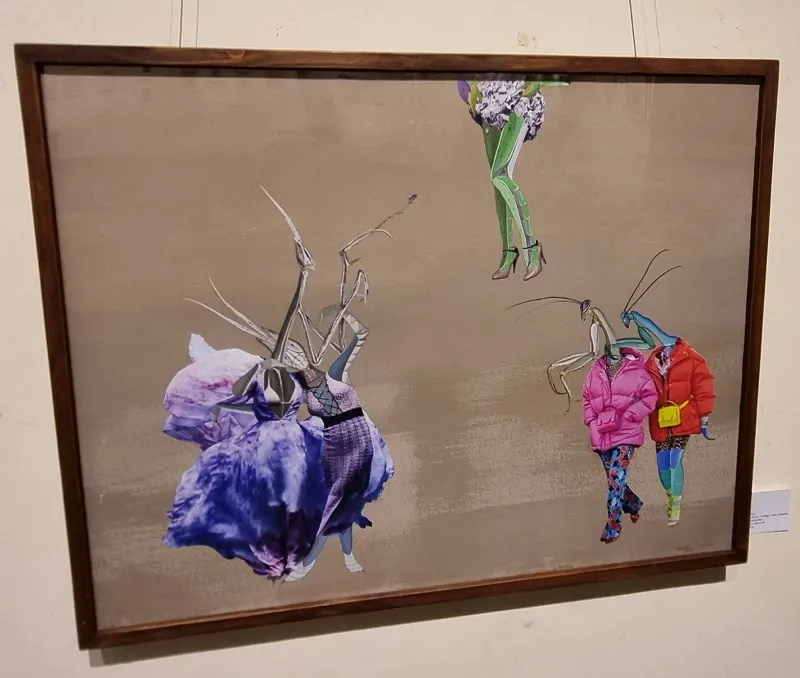
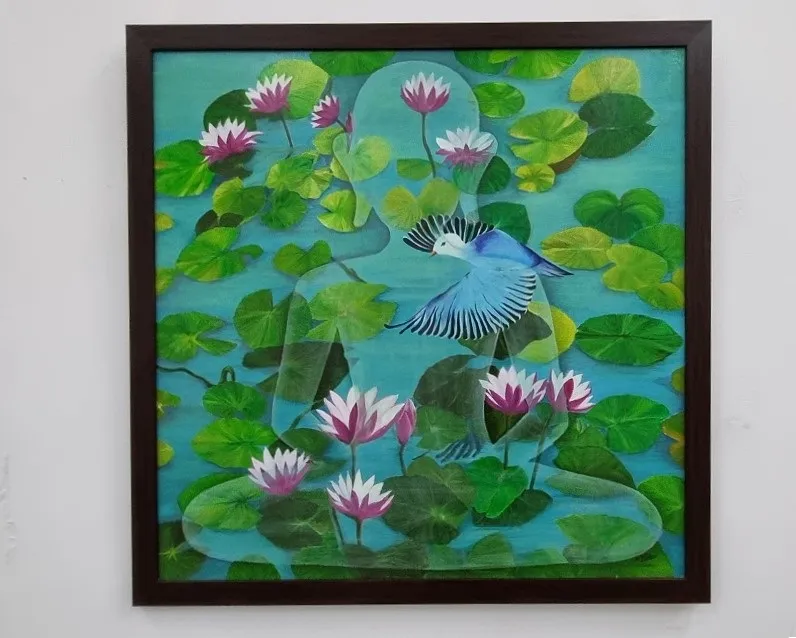
(All photographs of artworks were taken by Madanmohan Rao on location at the exhibition.)
Edited by Suman Singh










